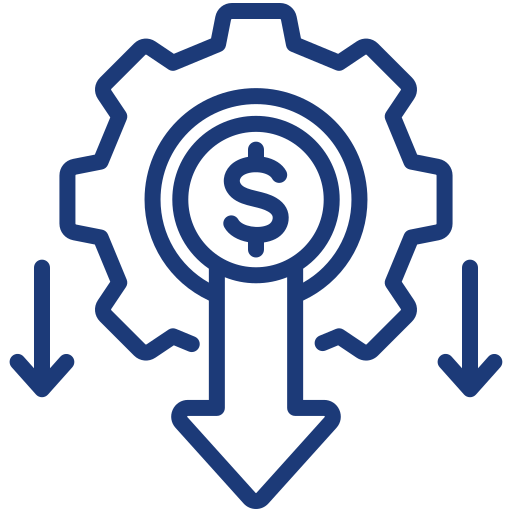RPA for Insurance: Streamline Operations and Enhance Service Delivery
Transform Operations, Boost Efficiency & Compliance
The insurance industry is faced with numerous challenges, including managing vast amounts of customer data, processing claims efficiently, and staying compliant with industry regulations. As consumer expectations rise for faster, more efficient services, the pressure on insurance companies to keep up grows. Robotic Process Automation (RPA) offers a game-changing solution to these challenges.
Robotic Process Automation (RPA) is transforming the insurance industry by automating repetitive, rule-based tasks that traditionally required significant manual effort. This technology enables insurers to improve operational efficiency, reduce costs, enhance accuracy, and provide better customer service.

Efficiency Gains
RPA automates a wide range of insurance processes, from claims processing to policy issuance. By automating routine tasks, insurance companies can reduce delays, minimize human error, and significantly speed up processing times. These all lead to improved service delivery and higher customer satisfaction.

Cost Reduction
With RPA, insurance companies can automate labor-intensive tasks such as data entry, claims adjudication, and customer data management. This reduces the need for manual labor and eliminates costly errors, translating to considerable savings in operational costs. RPA enables insurers to operate more cost-effectively without compromising service quality.

Improved Accuracy and Compliance
In an industry driven by strict regulations, RPA ensures that processes such as claims handling, regulatory reporting, and underwriting adhere to compliance requirements. It minimizes the risk of human error and ensures that each task is completed in line with industry standards and regulations like Solvency II and GDPR.

Scalability and Flexibility
The insurance industry faces increasing competition and a growing customer base. RPA and AI algorithms allow companies to scale operations without needing to add significant resources. Whether handling seasonal peaks in claims processing or accommodating a growing volume of customer requests, RPA offers the flexibility to meet changing demands efficiently.
RPA Use Cases in Insurance
RPA bots automatically capture and process initial claim notifications from emails and web portals. The bots retrieve key information such as policy numbers, incident dates, damage descriptions, and contact details, then automatically enter data into the claim management system. This eliminates manual data entry errors and reduces processing time from hours to minutes.
Insurance claims often involve extensive documentation including police reports, medical records, repair estimates, and photographs. By the use of AI-powered OCR or Agentic OCR and RPA can automatically extract relevant information from these documents, categorize them appropriately, and populate the data into claims management systems. This significantly reduces the time adjusters spend on administrative tasks.
More than 40% of underwriting is administrative. RPA and ML automatically collect and analyze data from multiple sources to support underwriting decisions aided by a human in the loop. This includes gathering information from credit bureaus, motor vehicle records, property databases, medical records, and third-party risk assessment platforms. The consolidated information is then presented to underwriters in standardized formats.
For straightforward policies that meet specific criteria, RPA automates the entire issuance process. Bots can generate policy documents, calculate premiums, process payments, and send policy confirmations to customers. Similarly, for policy renewals, bots can automatically update information, recalculate premiums, and process renewals for policies that haven’t had significant changes.
RPA bots handle routine policy administration tasks such as address changes, beneficiary updates, coverage modifications, and payment method changes. Customers submit these requests through self-service portals or via email, and bots process them immediately, updating all relevant systems and sending confirmation notifications.
RPA can automate the creation and submission of regulatory reports by extracting data from various systems, applying required formatting, performing validation checks, and submitting reports to regulatory authorities within specified timeframes.
RPA and OCR streamline financial operations by automating invoice processing, payment approvals, check generation, and reconciliation activities. Bots can match invoices to purchase orders, verify approval workflows, and process payments according to established business rules.
RPA Implementation in Insurance
01
Process Assessment
Begin by analyzing your existing processes to identify automation opportunities and understand business metrics to be improved.
02
Custom Automation Design
A custom RPA solution that fits your unique needs is then being designed by the service provider or internal RPA team. Whether it’s for automating claims processing, underwriting, or customer service, RPA solutions are built to integrate seamlessly with existing systems.
03
Deployment and Integration
Once the RPA solution is developed, proceed with deployment and integration into your IT infrastructure. Ensure that the automation tools work seamlessly with your core systems and aim to minimize disruption and maximize productivity from day one.
04
Continuous Monitoring and Optimization
After deployment, a service provider or internal RPA team provides ongoing monitoring and optimization. Ensure that the RPA system continues to perform at its best. .
Get Started with RPA for Insurance Today
Discover how RPA can streamline your insurance processes, reduce costs, and improve customer satisfaction. Contact us today to learn how we can help automate your operations. Take your insurance business to the next level.
Our selected projects
We empower leading international companies to operate with x10 efficiency
FAQs
Yes! RPA can significantly enhance the customer experience. It automates routine tasks like processing claims, and updating customer information. Automation speeds up response times, reduces errors, and ensures consistency. This results in a smoother and more efficient service for policyholders.
RPA can automate several stages of claims processing. They include claim intake, data extraction from documents, claim validation, and payment issuance. For example, when a customer submits a claim, RPA can extract relevant details from the documents, verify the information, and send notifications to relevant departments for further action, reducing the overall processing time.
RPA is suitable for insurance companies of all sizes. Small insurers can automate specific tasks like customer onboarding and claims verification. PRA helps them reduce operational costs and improve efficiency. Large insurers can leverage RPA for more complex processes like underwriting and compliance management, ensuring scalability and increased productivity.
The ROI for RPA in insurance is typically seen in reduced operational costs, faster processing times, and improved accuracy. For instance, automating claims processing can reduce processing time by up to 60%. It leads to cost savings and higher customer satisfaction. The ROI varies depending on the number of processes automated. The overall impact is positive in both cost savings and operational efficiency.
RPA plays a pivotal role in the digital transformation of insurance by automating manual, time-consuming processes. This allows insurance companies to adopt more advanced digital tools, improve operational agility, and enhance data analytics capabilities. RPA facilitates the shift to digital workflows, helping insurers stay competitive in an increasingly tech-driven industry.
RPA solutions in insurance require ongoing support for monitoring, maintenance, and upgrades. This ensures that the automation system continues to perform optimally, integrates with new technologies, and adapts to evolving business needs. Support also includes training for staff to effectively manage and optimize the RPA systems.
What our customers say
It was a great decision to get PythonRPA as a partner in our first ever RPA implementation within the organization. Apart from all the available features of their platform, I greatly appreciate the flexibility of the PythonRPA team to accommodate complex internal requirements from our information security and IT architects. Having all these pieces in place, we were able to successfully kick off RPA technology and create grounds for further scaling its benefits across multiple departments.

Sr. Transformation Lead, Home Credit Philippines.

“Immediately after the first bots appeared, department employees began to wonder why they had been doing this routine work for so long and not developing a business.”

Otbasy Bank

“I have worked with Python RPA for many years and have achieved outstanding results. We have automated business tasks across nearly all departments of our large company and are extremely satisfied with the speed and quality of automation it provides.”

RPA Business Analyst

“Advantages of the Python RPA platform helped speed up robot development by four times. It’s a pleasure to work with a high-quality domestic product. “

Head of IT department BI Innovations

“Python RPA enables us to automate our processes swiftly and efficiently, ensuring top-quality service for our customers”

Head of Department Metha & BPM & RPA

“I have worked with the Python RPA platform for many years. It’s robust functionality, responsive vendor team, and competitive license pricing make it an ideal solution for Aiyl Bank, the largest bank in Kyrgyzstan.”

Head of the Methodology Department, Business Process Automation and Modeling at Aiyl Bank



